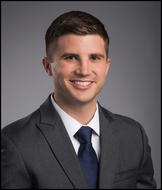 In the management of Submassive and Massive PE:
0 Comments


 1. Be wary of ECG Early Depolarization (ER) pattern limited ONLY to the inferior limb leads. ER is most typically found in anterolateral precordial leads, and may extend to inferior leads (roughly 50% of cases). Rarely is ER found ONLY in inferior leads. 2. In the setting of RBBB, follow typical interpretation scheme for myocardial injury, as suggested by the Universal Definition of Myocardial Infarction statement paper. 3. LVH is typically associated with ST amplitude changes DISCORDANT with the major forces of the QRS complex. That is, when the QRS is predominantly upright, the ST segment may be depressed; when the QRS is predominantly down going, the ST is often elevated. 4. When in doubt regarding the ECG diagnosis of an occluded epicardial coronary artery (STEMI call??), engage in immediate discussion with your interventional cardiology physician colleagues. These decisions are not always straight forward or easy. Share the ECG image with your cardiologist, and provide clinical scenario background to inform the decision you all will make together. 5. Francis N. Wilson MD (1890 – 1952): originator of Wilson’s Central Terminal (reference electrode for unipolar precordial leads) 
Additional coverage of Submersion Topics: See PedEMMorsels - Submersion Basics See PedEMMorsels - C-Spine Injuries and Submersions See PedEMMorsels - Prolonged QTc and Submersions See PedEMMorsels - Submersion Prevention 

 Advanced Maternal Age
Peripartum Cardiomyopathy
Assisted Reproduction
 1. When resuscitating DKA patients, avoid chloride-rich fluids as to not worsen acidosis. 2. Fight the urge to give bicarb! It does not address the pathophysiology of DKA and will likely harm the patient. 3. Mind the gap! Remember to follow the closure of the anion gap to guide treatment, not the serum glucose. 4. Not all "respiratory distress" is due to pulmonary etiology - think about metabolic causes of tachypnea as well!  1. Understand non-invasive ventilation settings:
2. NIV adjustments made according to disease state:
3. Remember the rule of 15’s for pre-oxygenation:
|
Archives
August 2018
Categories
All
|
 RSS Feed
RSS Feed
